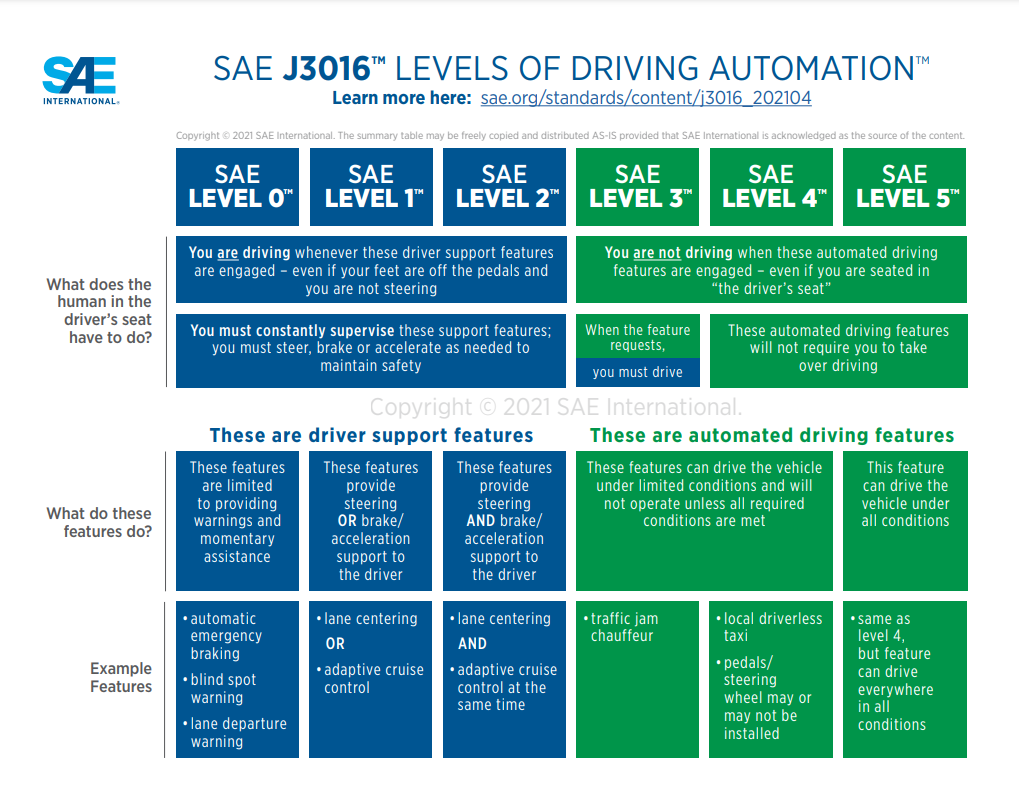Preliminary Data On Automated Driving Systems Shows Majority Of Incidents With Non-Motorized Users Are With Bicyclists
In June 2021, the National Highway Traffic Safety Administration (NHTSA) issued a Standing General Order (SGO) requiring identified manufacturers and operators of Automated Driving Systems (ADS) and Advanced Driver Assistance Systems (ADAS) to report certain crashes involving vehicles equipped with those systems.
With two years of reporting, 31 incidents with non-motorists have been reported and 24 of those incidents were with bicyclists. Put another way, incidents with bicyclists account for more than 77% of reported incidents with non-motorists. A majority of those incidents occurred within the last year. While there are limitations with the reporting required by the SGO, this preliminary data shows that vehicle technology may not provide benefits to all people outside of vehicles equally and attention needs to be paid to bicyclist safety. To aid bicyclist safety, the League of American Bicyclists has worked with leading ADS developers like Cruise to promote best practices for safe interactions with bicyclists.
NHTSA’s SGO is meant to provide timely information on crashes involving new technology that promises to greatly increase the safety of people in and around motor vehicles. The SGO has slightly different requirements for ADAS and ADS reporting. ADAS is currently available on many vehicles, and the SGO specifically deals with vehicles that have systems that are classified according to the Society of Automotive Engineers (SAE) Level 2 ADAS. ADS is not available on vehicles currently sold to consumers. For examples of these technologies, Tesla’s “Full Self-Driving” package is a level 2 ADAS, while Cruise offers a level 4 ADS in its vehicle deployed in San Francisco. The levels of automation defined by SAE are shown in the graphic below.

At this time, ADS equipped vehicles are not widely deployed. All reported incidents with non-motorists come from eight localities where ADS equipped vehicles are deployed. Congress is currently considering legislation that would allow more purpose-built vehicles equipped with ADS to be deployed. Since the SGO only dates to June 2021, the most well known incident with a non-motorist, where an Uber vehicle operating using an ADS hit and killed Elaine Herzberg while she walked a bike across a road in Arizona, is not included in the reported data. In fact, no incidents with non-motorists were reported from Arizona despite Waymo’s deployment in Arizona since 2018.
Reporting on ADAS-involved crashes appears to show fewer incidents involving non-motorists. Only ten incidents with non-motorists were reported under the SGO for ADAS-equipped vehicles. Unlike ADS incidents where bicyclists were the most common person involved, for ADAS incidents 90% of reported incidents were with people walking. Eight of the nine reported incidents with people walking involved a Tesla vehicle. NHTSA has proposed several changes to its testing and vehicle standards to incorporate pedestrian safety through automatic emergency braking, a level 1 ADAS. As of yet, no similar changes to incorporate bicyclist safety have been proposed.
Advanced vehicle technology, whether in the form of ADAS or ADS, is often discussed as a revolutionary technology that will eliminate all human errors and the vast majority of traffic violence. The preliminary data from NHTSA’s SGO shows that incidents still occur with the technology currently available and more work is needed before the lofty promises of this technology are realized.